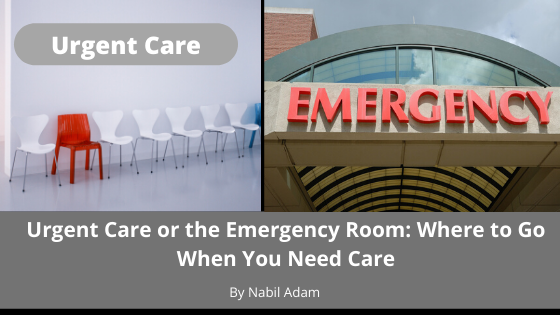Both urgent care and emergency care offer medical treatment for conditions that need attention within 24 hours. Both provide medical care during the hours when most doctors’ offices are closed. The most significant difference between the two is that urgent care handles comparatively minor problems like strep throat or earache, while emergency care handles conditions that can threaten life or limb like a broken leg or pneumonia.
Another big difference between the two is that urgent care facilities take patients based on who arrived first, while emergency care prioritizes the worst cases over more minor problems. Thus, a patient with a condition that isn’t life-threatening may wait hours before being seen by a doctor if they go to emergency care. They would have a much shorter wait at an urgent care facility.
Deciding where to go, however, is not always clear-cut. For example, most authorities recommend going to the emergency room if you experience chest pain. While chest pain can indicate a heart attack, it also has relatively benign causes like heartburn or a pulled muscle. A patient who is under 55, has no history of heart disease and can identify a benign cause of their chest pain would probably be better off going to urgent care. By contrast, an older patient with a family history of heart disease should go to emergency care or even call 911. This is especially true if the pain is on their left side, or they have a condition like high cholesterol that increases their risk of heart disease.
With that said, there are guidelines to help a patient choose. For example, someone should go to the emergency room if any of the following are true:
- They are having trouble breathing
- They have symptoms of a stroke like sudden paralysis, confusion, or difficulty talking
- They have severe abdominal pain and fever accompanied by nausea, lethargy, and a swollen abdomen
- They have a broken bone involving their arm, leg, hip, or back
- They have an injury or illness that may be life-threatening
A patient should go to urgent care if any of the following are true:
- They have symptoms of a cold or flu that haven’t gotten better after at least two days of home care
- They have a condition that needs treatment but isn’t life-threatening like pink eye, rashes, sprained ankle, or a urinary tract infection
- They have a minor fracture
Of course, nobody wants to go to the doctor if they can help it. Modifying your diet and exercise regime can help you stay healthy during the winter.

